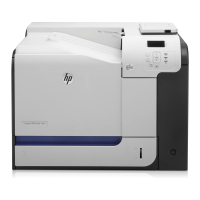FUP Overview
File Utility Program (FUP) Reference Manual—523323-014
1-22
MAP DEFINEs
MAP DEFINEs
You can specify a MAP DEFINE wherever FUP permits a file name. It is sometimes
easier to use a DEFINE name such as =CUSTOMERS than an actual file name such as
\SF.$ACCNTS.CURRNT.CUSTNMES.
MAP DEFINEs Example
DUP cereal,=MY_DEFINE
INFO =MY_DEFINE
TAPE DEFINEs
You can specify a TAPE DEFINE as:
out-filename (destination) in a BUILDKEYRECORDS command
in-filename (source) or out-filename (destination) in a COPY command
in-filename (source) in a LOAD command
Handling Different Types of Files
This section contains information about handling file formats, as well as guidelines for
handling OSS, SQL/MP, SQL/MX, and SMF files.
Handling File Formats
A new disk file format (Format 2) for describing large format files (big files) is available
starting with the G06.00 and D46.00 RVUs:
At the time of creation, you can specify the file format, as Table 1-1 shows.
Note. Do not use TAPE DEFINE attributes that conflict with your FUP command parameters.
For more information about how FUP input and output options work with TAPE DEFINEs, see
Appendix A, DEFINE Tables
.
Format 1 A file created on the G06.00 or D46.00 RVU or later that is smaller than 2 GB
minus 1 MB, or a file created on RVUs preceding G06.00 or D46.00.
Format 2 Either a large format file or a file that can contain larger partitions than a file
created on RVUs preceding G06.00 or D46.00.
A Format 2 file can exceed the 2 GB minus 1 MB size limit of a Format 1 file.
However, you can explicitly create a Format 2 file even if its maximum partition
size is less than 2 GB.

